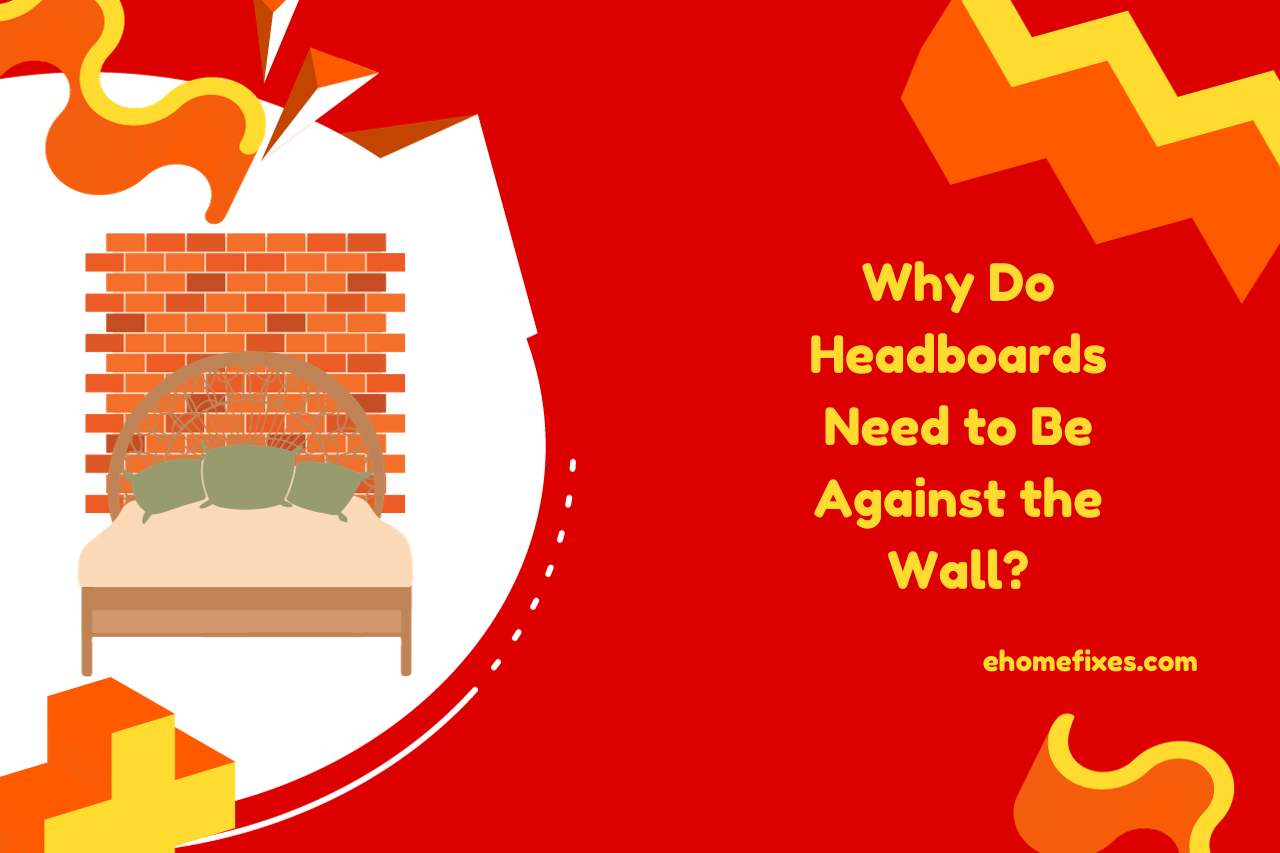Does a Headboard have to Be Against the Wall? Exploring Wall-Free Options!
Are you wondering, “Does a headboard have to be against the wall?” In fact, bedroom organizing requires an aesthetic attitude and architectural vision. Thus, most homeowners stick to this question, considering the best place and angle to position their bed. From floating headboards to off-center arrangements, this discussion aims to uncover alternatives that transcend the conventional. So, get ready to discover the perfect balance between aesthetics and functionality, optimizing your bedroom space with a touch of innovation. Whether you’re seeking stability or visual flair, this guide explores the pros and cons, answering the question and unlocking a world of possibilities in bedroom decor.
Does a Headboard have to Be Against the Wall?
No, a headboard doesn’t necessarily have to be against the wall. Many creative and stylish alternatives exist. Floating headboards, room dividers, or using the foot of the bed as a focal point are popular choices. To decide whether you position the headboard against the wall or centralize it, consider these factors.
- Room Layout: First of all, assess the overall layout of your bedroom. Consider the size and shape of the room, as well as the placement of windows, doors, and other furniture.
- Bed Size: Match the size of your headboard to the dimensions of your bed. A king-sized bed may require a larger headboard for visual balance, while a smaller headboard can complement a twin or full-sized bed.
- Wall Material: You should take note of the wall material. Some headboards require wall mounting, which may be easier on certain wall surfaces. Thus, you have to choose a headboard that is compatible with your wall type.
- Installation: It is highly important to check the installation requirements of the headboard. Some may need to be secured to the wall, while others attach directly to the bed frame. Ensure you have the necessary tools and follow the manufacturer’s instructions for proper installation.
- Bed Height: Consider the height of your bed. Taller headboards can make a bold statement, while shorter ones may provide a more minimalist look.
- Style and Aesthetics: Choose a headboard that aligns with your overall bedroom decor. Whether it’s a padded upholstered headboard for a cozy feel or a sleek wooden one for a modern touch, ensure it complements wall style.
- Practicality: If you like to sit up and read or watch TV in bed, opt for a headboard with a comfortable design that provides adequate support. Some headboards come with built-in shelves or lighting options for added functionality. Check whether your wall can support these additional features.
- Color and Texture: Consider the color palette and texture of both the headboard and the wall. Harmonize these elements to create a cohesive and visually appealing bedroom space.

Why Do Headboards Need to Be Against the Wall?
Most people find that headboards need to be against the wall for certain reasons, such as support and stability, bed frame integration, and so on. Check the complete list of reasons below.
- Support and Stability: A wall provides solid support for the headboard, ensuring it stays securely in place. This stability is crucial for preventing any wobbling or movement of the headboard. This matter is especially taken into consideration when the kids sleep in.
- Visual Centerpiece: Placing the headboard against the wall allows it to become a focal point in the bedroom. It creates a visually pleasing and organized look, serving as a backdrop for the bed.
- Bed Frame Integration: Many headboards are designed to be attached to bed frames, and placing them against the wall facilitates seamless integration. This setup enhances the overall structure and cohesiveness of the bed, so most interior designers suggest this setup for bedrooms.
- Space Optimization: Positioning the headboard against the wall optimizes space, especially in smaller bedrooms. It allows for efficient use of the available area while maintaining a polished appearance.
- Functionality: The wall acts as a buffer, preventing pillows and bedding from slipping down the back of the bed. Again, this functional aspect ensures a tidy and well-maintained bedroom.
Pros and Cons of Having a Headboard Against the Wall
Let’s have an insight into the pros and cons of having a headboard against the wall. This brief analysis will help you to decide whether you position the headboard against your wall.
Pros
- Stability and Support: Placing a headboard against the wall ensures stability. Most importantly, it provides a secure anchor for the bed, preventing any movement or wobbling.
- Aesthetic Focal Point: The wall acts as a backdrop, turning the headboard into a visual centerpiece. This arrangement contributes to a cohesive and organized look in the bedroom.
- Functional Design: Many headboards are designed to be against the wall, integrating seamlessly with bed frames. This setup enhances the overall functionality and structure of the bed. However, if you do not have an idea about how to frame your bedroom, the best practice would be to get an expert’s advice.
- Space Optimization: Having the headboard against the wall optimizes space, making it ideal for smaller bedrooms. It allows for efficient use of the available area while maintaining a polished appearance.
- Prevents Pillow Slippage: The wall prevents pillows and bedding from slipping down the back of the bed, ensuring a neat and well-maintained appearance.
Cons
- Limited Bed Placement Options: Placing the headboard against the wall restricts bed placement options. This might limit creative arrangements and room layout possibilities.
- Reduced Accessibility: Access to one side of the bed can be hindered when the headboard is against the wall. This might be a consideration for those who prefer easy access from both sides.
- Visual Monotony: While a wall-mounted headboard creates a cohesive look, it can also result in visual monotony. Some may prefer a more dynamic or asymmetrical bedroom design.
- Cleaning Challenges: The worst scenario is that cleaning behind and around the bed can be challenging with a headboard against the wall. This might be a concern for those who prioritize cleanliness and accessibility.
You May Also Like
- Gap Between Mattress and Headboard – Solving the Mystery!
- Can you Buy Headboard Separately? Design Flexibility!
- Does a Headboard Reduce Noise? Exploring the Noise Reduction!
- What Headboard to Use for Adjustable Bed? Selecting the Ideal Headboard!
- Headboard Doesn’t Fit Bed Frame – Mismatched Sizing!
- How to Paint Headboard and Footboard? Revamp Your Bed!
- Why are Headboards So Expensive? Exploring the Factors!
- Why does My Mattress Move Away from Headboard? Exploring Common Causes!
- Can a Queen Headboard Fit in a Car? Mastering the Move!







